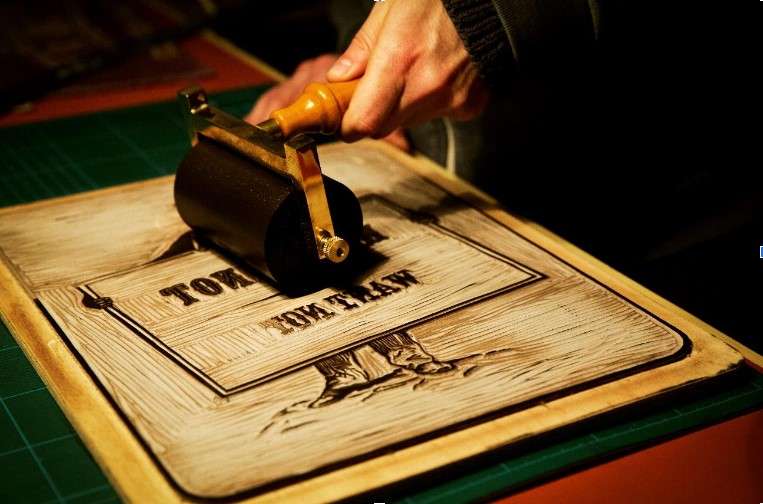A design with the perfect final touch can come to life, especially regarding print materials.
Print finishing techniques are crucial in enhancing printed products’ visual appeal, durability, and overall quality. From business cards to brochures, packaging to promotional materials, the choice of print finishing can make a significant difference.
In this blog, you will explore five remarkable print finishing techniques that can take your printed materials to the next level.
1. Foil Stamping
Foil stamping is a highly effective print finishing that produces a stunning and sophisticated effect.
Applying heat and pressure is essential to achieving a shiny and reflective design. This technique transfers metallic or pigmented foil onto the printed material.
Whether applied to the entire surface or specific elements like logos or borders, foil stamping adds a touch of opulence and class to any printed material.
Hence, it creates a luxurious appearance on invitations, certificates, packaging, and high-end promotional materials.
2. Spot UV Coating
Spot UV coating is a printing technique that applies a glossy and raised coating to certain areas of a printed piece.
It creates an eye-catching contrast between coated and uncoated areas, adding depth and visual interest. By highlighting logos, text, or images, spot UV coating draws attention to important elements, making them stand out.
It is often used in business cards, brochures, and product packaging to leave a lasting impression on recipients.
3. Matte and Gloss Lamination
Lamination is a versatile print finishing technique that involves applying a thin layer of plastic film to a printed material.
There are two popular options: matte and gloss lamination. Matte lamination provides a smooth, non-reflective surface that gives a sophisticated look.
Gloss lamination, on the other hand, adds a glossy finish that enhances colors and gives a polished appearance.
Lamination improves the appearance of printed materials and protects them from wear, tear, and moisture, making them last longer.
4. Embossing and Debossing
The next technique is embossing and debossing. These are printing techniques that add a three-dimensional (3D) effect to materials, making them more appealing to the touch.
With embossing, the design is raised above the surface, while debossing presses it into the material. These techniques add depth, texture, and sophistication to designs, creating a visually stimulating experience.
Embossed or debossed techniques are frequently used in business cards, stationery, book covers, and packaging, making them visually and physically captivating.
5. Die Cutting
Do you know about die cutting? It is a technique used in print finishing to make custom shapes and cutouts in printed materials.
You can create unique and creative projects using a specialized die to cut intricate designs. Die cutting allows for endless possibilities in creating eye-catching designs beyond the standard rectangular shape.
This technique is commonly used in packaging, invitations, marketing materials, and labels, giving your printed pieces an extra edge.
Conclusion:
With print finishing techniques, you can transform your printed materials into stunning masterpieces.
You have various options, such as spot UV coating for added emphasis and dimension, foil stamping for an elegant touch, and embossing and debossing for a tactile feel.
By unleashing your creativity with die cutting and using matte and gloss lamination to enhance the appearance and durability of your prints, you can take your designs to a new level and leave a lasting impression on your audience.

